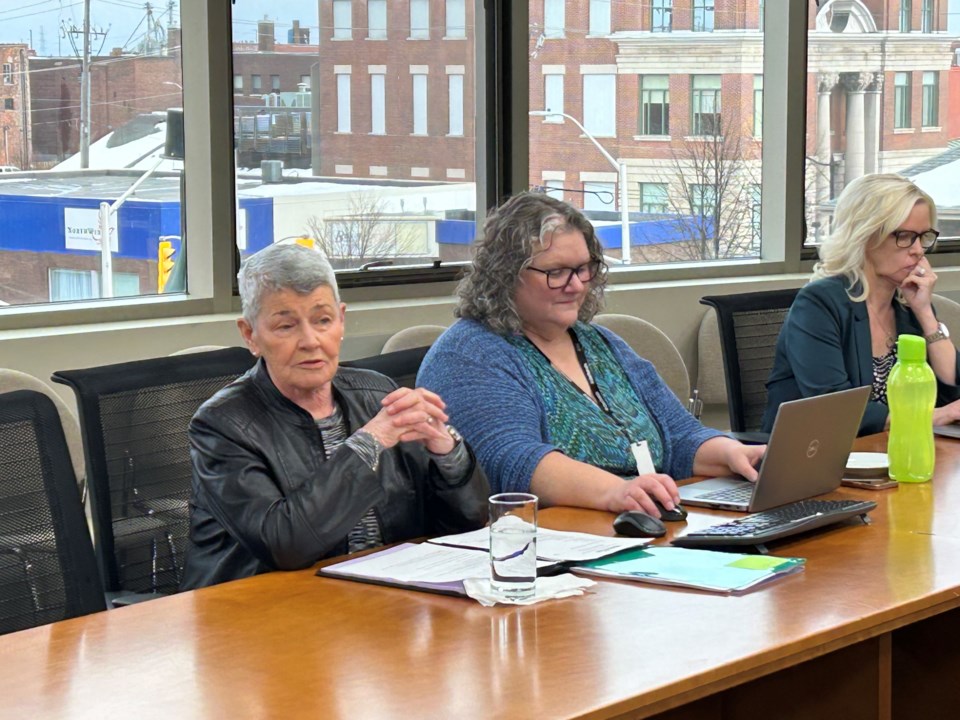THUNDER BAY – The results of the three-week public engagement survey period will soon be unveiled to the council composition committee.
The committee, which will meet on Tuesday afternoon at city hall, is composed of six members including chair Rebecca Johnson, vice-chair Cody Fraser along with members Heather McLeod, Riley Burton, Wayne Bahlieda and Carlos Santander-Maturana.
One concern that was raised by the committee during the Feb. 6 meeting was what they called a lack of engagement by the public to the survey.
Johnson is confident that once some specifics are disclosed, more uptake will occur.
“What we’re looking at doing in the next phase of engagement, which will probably be in early fall, is to put some draft recommendations together of what the council could potentially look like and there will be other questions that will go along with it,” Johnson said after the February meeting.
“My feeling is that by then more people will be engaged and I hope we will have more people responding to the second survey than we did to this initial one.”
Staff reported nearly seven hundred respondents were counted in phase one with over 500 submissions coming through the Get Involved Thunder Bay page.
NOTABLE STATISTICS:
- Nearly 75 per cent of respondents felt that having 13 councillors around the table was not appropriate, did not provide value or represent the city well
- About 53.6 per cent of respondents saw the value in having a ward system in Thunder Bay
- 83 per cent of respondents felt that a ward boundary review should be completed
- 61 per cent of respondents felt that the $31,552 base pay plus a car allowance of $2,750 is fair compensation for the work performed by a councillor
Committee member Bahlieda is also optimistic that they haven’t “tapped the well” of respondents going forward.
“It’s just that when you're marketing something or you are building up a brand, you have to advertise it. You have to get some decisions out there. We have to let the people know what's coming down the pipeline. I'm hoping just based on that it'll generate more interest,” he said.
Another topic of conversation that might be revisited by the committee is having the Thunder Bay Public Library involved in the public engagement process.
“I have seen the library in action through the media, and I think it may be an opportunity to break barriers in the sense that people are intimidated by filling in surveys or by coming into city hall,” Bahlieda noted.
“If the library with their branches are able to reach out and capture demographics that we haven't been able to capture in our survey, all the power to them.”
Johnson also likes the idea of having the library on board.
“They gave us a proposal, which we will work with and have a more in-depth discussion about. That partnership with the library is very important.”
Bahlieda also raised a few concerns that got the committee’s attention -- what the cost is to run as an at-large or ward councillor and why the decision was previously made to go with the current composition of council.
“What's the average cost if you wanted to run for councillor at-large or in a ward? If you determine what the average costs are, that may help respondents or us as a committee with any future conclusions that we come to,” Bahlieda said.
Candidates and their spouses can fund their own campaigns, to limits of roughly $24,000 in the mayoral race, $21,500 in the at-large race, and around $7,000 in most ward races.
“The second point I raised was the rationale on how they arrived at the hybrid system. Obviously, they did a lot of work on it, and I'm sure that's a valuable document from a committee perspective," he said.
When the municipality of Thunder Bay was created in 1970, it began with a mayor and 12 councillors elected evenly across four wards.
That expanded to seven wards in 1976, before 1985 when the city adopted its current hybrid system that elects a mayor, seven ward councillors, and five at-large councillors.
A final report from the committee on the composition of council is slated for completion in advance of the 2026 municipal election.
